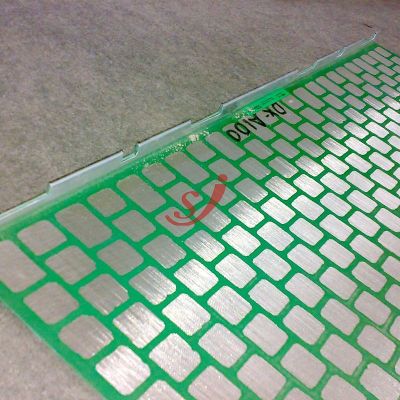Why And How To Replace Shaker Screens
Understanding the Importance of Shaker Screen Replacement
Shaker screens play a crucial role in the separation process during drilling operations. They are responsible for filtering out solid particles from drilling fluids, ensuring the smooth operation of the equipment and the overall efficiency of the drilling process. However, like all mechanical components, shaker screens experience wear and tear over time, leading to a decline in performance. Replacing worn-out screens is essential to maintaining productivity and reducing downtime.
Common Issues with Worn Shaker Screens
When shaker screens begin to wear out, several problems can arise that directly affect operational efficiency. The most common issues include:
Reduced Filtration Efficiency: As screens degrade, they become less effective at filtering out smaller particles, allowing contaminants to remain in the drilling fluid. This can lead to equipment damage and compromised drilling quality.
Clogging and Blinding: Worn screens are more prone to clogging, where particles block the mesh, or blinding, where fine particles stick to the screen. Both issues reduce fluid flow and filtration speed, causing operational delays.
Fluid Loss: When screens are damaged or ineffective, excessive fluid can pass through without proper filtration, leading to significant fluid loss. This increases the cost of drilling operations due to the need for more drilling fluid.
Increased Downtime: Inefficient screens require more frequent maintenance, leading to unexpected downtime and lost productivity.
Signs That It's Time to Replace Your Shaker Screen
Knowing when to replace your shaker screen is essential for avoiding costly repairs and downtime. Look for the following signs that your screen needs replacement:
Visible Wear and Tear: Holes, tears, or fraying of the screen mesh are clear indicators that the screen is no longer functioning at optimal capacity.
Decreased Shaker Performance: If your shaker is not filtering fluids as efficiently as before, or if you notice an increase in unfiltered solids, it may be time to replace the screen.
Unexplained Fluid Loss: Excessive fluid passing through the screen without proper filtration indicates a damaged or worn-out screen that should be replaced immediately.
Clogging Issues: If your screens are frequently clogged despite proper maintenance, the mesh may be compromised, requiring replacement.

How to Choose the Right Replacement Shaker Screen
When it comes to replacing your shaker screen, selecting the right type is critical to ensure compatibility and maintain operational efficiency. Here are the key factors to consider:
Additional resources:Minerals & Metallurgy
Screen Mesh Size
How Do Polyurethane Screens Improve Performance?
Transform Your Space with One Way Vision Window Screen Aluminum Mesh
What Are the Benefits of Perforated Metal Canopy?
What Mesh is Used for Gabions?
How to Choose a Decorative Curled Steel Wire Mesh Maker?
How is 50mm PVC Chicken Wire Mesh Revolutionizing Farming?
The mesh size of the screen determines its filtering capacity. Finer meshes are ideal for capturing smaller particles, while larger meshes are better for filtering larger particles. Always choose a screen mesh size that matches the specifications of your drilling operation to avoid inefficiencies.
Material Durability
Shaker screens are typically made from stainless steel or composite materials. Stainless steel offers excellent durability and corrosion resistance, making it ideal for harsh drilling environments. Composite screens, on the other hand, are lighter and often more flexible but may wear out faster. Consider the environment and the lifespan of each material when selecting a replacement.
Screen Compatibility
Ensure that the replacement screen is compatible with your shaker model. Different shaker systems have varying screen dimensions, mounting requirements, and vibration patterns. Using an incompatible screen can result in improper filtration and potential damage to the shaker.
Steps to Replace a Shaker Screen
Replacing a shaker screen is a straightforward process, but it requires careful attention to detail to avoid damaging the new screen or the shaker system itself. Follow these steps to ensure a smooth replacement:
Step 1: Turn Off the Shaker
Before beginning the replacement process, turn off the shaker and ensure that all equipment is properly secured. This minimizes the risk of injury and protects the equipment.
Step 2: Remove the Old Screen
Carefully remove the worn-out screen from the shaker. Be sure to clean the shaker bed and remove any residual debris that may have accumulated during operation.
Step 3: Install the New Screen
Place the new Shale Shaker screen onto the shaker bed, ensuring that it is correctly aligned with the mounting points. Secure the screen in place, making sure it is tight and free from any gaps that could affect filtration.
Step 4: Test the Shaker
Once the new screen is installed, turn the shaker back on and run a test to ensure that the screen is functioning properly. Check for any signs of improper alignment or performance issues.
Maintenance Tips for Prolonging Shaker Screen Life
Regular maintenance can extend the life of your shaker screens and reduce the frequency of replacements. Here are some maintenance tips to follow:
Regular Cleaning: Clean the screens regularly to prevent particle buildup and clogging. Use a soft brush or air compressor to remove debris without damaging the screen mesh.
Avoid Overloading: Excessive loading of materials onto the shaker can put strain on the screen, leading to premature wear. Monitor and adjust the feed rate as needed.
Monitor Tension: Check the tension of the screens regularly to ensure they are secure. Loose screens can cause improper filtration and damage the shaker system.
Conclusion: Maximize Efficiency with Proper Screen Replacement
Replacing worn-out shaker screens is an essential part of maintaining efficiency in drilling operations. By identifying the signs of wear, selecting the appropriate replacement screen, and following a proper maintenance routine, you can ensure that your shaker screens provide optimal performance and extend their lifespan.
Additional resources:How Hastelloy C-276 Mesh Solves Your Corrosion Problems Effectively
Top Uses of Copper Clad Aluminum Plate For Russia in 2024
What are the key benefits of Copper Clad Stainless Steel?
Choosing the Right Decorative Curled Steel Wire Mesh
Benefits of ODM Galvanized Welded Mesh Fencing
Understanding Derrick DP 628 Shaker Screens for Effective Use
Understanding Shaker Screens: Applications and Benefits Explained
- Previous: None
- Next: None









